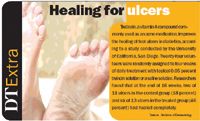- Acne
- Actinic Keratosis
- Aesthetics
- Alopecia
- Atopic Dermatitis
- Buy-and-Bill
- COVID-19
- Case-Based Roundtable
- Chronic Hand Eczema
- Chronic Spontaneous Urticaria
- Drug Watch
- Eczema
- General Dermatology
- Hidradenitis Suppurativa
- Melasma
- NP and PA
- Pediatric Dermatology
- Pigmentary Disorders
- Practice Management
- Precision Medicine and Biologics
- Prurigo Nodularis
- Psoriasis
- Psoriatic Arthritis
- Rare Disease
- Rosacea
- Skin Cancer
- Vitiligo
- Wound Care
Article
Children in growing numbers suffer from AD
Baltimore — Currently, 15 percent to 25 percent of children in industrialized countries suffer from atopic dermatitis (AD), representing an increase over the past two to three decades, according to Bernard A. Cohen, M.D., director of pediatric dermatology at Johns Hopkins Children's Center in Baltimore.

Dr. Cohen says experts have offered a number of theories for the increase.
"Some think genetics play a role - but that wouldn't explain this dramatic increase in the prevalence. Atopic dermatitis occurs across the board - so socioeconomic factors probably do not play a big role, either."
"There is some evidence pollutants and environmental factors are involved, but it's not universally clear from the studies. Some papers looked at children who were exclusively breast-fed, but those studies aren't clear-cut, because a few papers actually show that kids who were exclusively breast fed are at a higher risk of developing eczema than those who were not."
Western societies
Some theories might sound surprising, but Dr. Cohen says they may actually make sense.
"There is a hypothesis that Western societies are so into great nutrition and hygiene - utilizing disinfectants and antiseptics - that children here are not exposed to antigens and allergens as readily as they are in underdeveloped countries.
"Then, when they are exposed to these substances when they are older, they are more likely to develop asthma and eczema and other atopic disorders.
"A sizable study actually indicates children who grew up in a household with a furry animal as a pet when they were under a year of age are less likely to develop eczema."

"I cited a Scandinavian survey of 10,000 children where three-quarters of the parents confess they used alternative medicines because they weren't happy with the traditional offerings."
New treatments
New treatments are becoming available, however.
"A new class of topical drugs - topical calcineurin inhibitors - is available. Pimecrolimus and tacrolimus are non-steroidal agents approved for treatment of eczema in children 2 years of age and up. They have slightly different indications, but since they are non-steroids, they are not associated with thinning of the skin or with atrophy, and we hope they will be safe in places like the face, armpits, the groin and the breast - places where people don't want to use topical steroids."
Some controversy arose over these agents. The pediatric advisory board for the Food and Drug Administration recommended a "black box" warning on those medications, based on animal studies. Chimpanzees and mice that were given the agents systemically developed lymphomas.
Because the medications are used topically in humans, Dr. Cohen says it wasn't clear that the studies were relevant. The warnings were never applied. He agrees with the American Academy of Dermatology and the American Academy of Allergy position opposing the black box warning.
"They thought they were good drugs and were afraid that if a black box warning was issued, it would frighten parents away from using an effective treatment."
Beyond new agents
Although newer agents offer advantages over more traditional treatments, they aren't the overall answer to atopic dermatitis.
Newsletter
Like what you’re reading? Subscribe to Dermatology Times for weekly updates on therapies, innovations, and real-world practice tips.
















